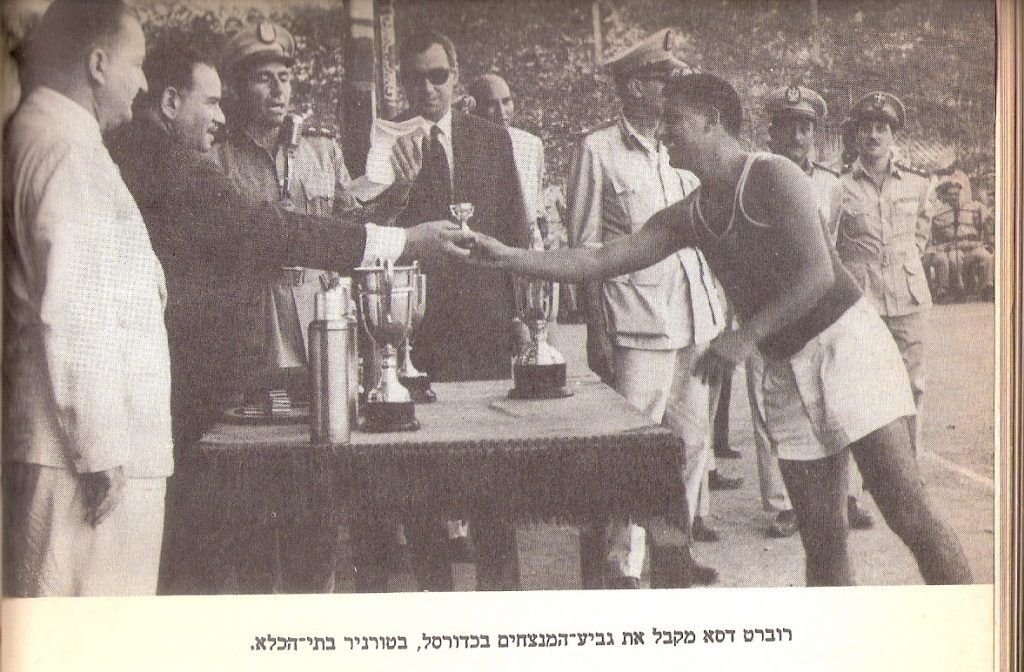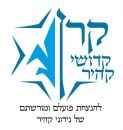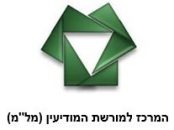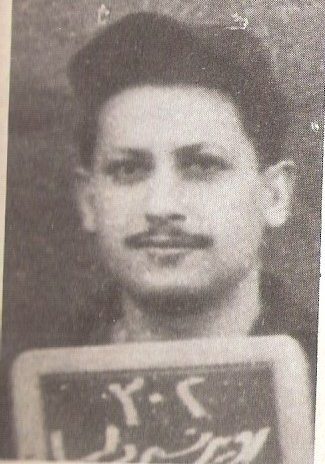Robert Dassa
Home » Robert Dassa
Born on May 8th, 1933 in Alexandria, Egypt, Dassa was Zahara’s (née – Deri) and Nissim’s Dassa’s third son. His father, who was born in Alexandria, stems from the Jerusalemite Dassa family. Robert’s mother arrived there from Jerusalem during the First World War, together with her widowed grandmother and her sister. Robert attended the local Jewish community elementary school. He graduated from a local high school named after the Maimonides, which was founded by Alexandria’s Chief Rabbi, Moshe Ventura. He infused his students with love for Israel and affiliation with Zionism. Robert was a member of the local Bnei Akiva religious Zionist youth movement in town, a tutor and for a while also branch coordinator.
In 1949, Dr. Haim (Victor) Saadia, a Zionist activist and one of the Bnei Akiva leaders from Cairo, turned to Robert and assigned him the mission to infiltrate into the “Dror” (the Zionist socialist activist youth movement) in order to attract them to the Bnei Akiva movement. After the founding of the State of Israel, and following imprisonment and political persecution in the diaspora, the Young Halutz movement (which stems from the “Dror” movement) fell apart, which launched a political competition between youth movements in order to win the hearts of the youth and recruit them. It was at the “Dror” movement that Robert met Victor Levi and Philippe Nathanson, who would later be recruited into Unit 131 together with him.
When the State of Israel was established, Unit 131 was the single operational unit at the Israeli Military Intelligence ward of the General Staff of the Israel Defense Forces (it was only at the end of 1953 that the ward became one of the General Staff Military Intelligence), which was designed to run intelligence operations in Arab states, particularly during war times.
In 1951, a serving officer of the unit, Captain Avraham Dar, was posted to Egypt in order to draft young Zionist Jewish activists and direct them through information gathering missions, which took place within the unit’s framework. Avraham Dar was assisted by Zionist activists and the staff of Mossad LeAliyah Beth, the paramilitary institution for immigration, in locating eligible young people. Ovadia Danon pointed Robert Dassa out as a potential candidate. Dr. Saadia also recommended him and clarified that joining this activity would mean he would have to leave the movement. Robert agreed, even if he did not appreciate the idea of departing from the movement. Following a talk Robert had with Avraham Dar, there was no doubt left in his mind about joining the cell net, even if at the cost of leaving the movement. Avraham Dar recruited additional young members in Cairo and Alexandria, and they were organized into small local groups. Since then, Robert and his friends were under cover and pretended to be young hedonist men with no affiliation whatsoever to the Zionist movement and streams.
At the end of 1952, Robert was summoned for a training in Israel. In order to leave Egypt, he had to enroll for university studies in France. Following his admission, he arrived in Israel, via France, in January 1953. His visa was valid until March. Therefore, he went through an intensive training program which included tours in Israel. The sights which were engraved in his memory during those hikes later on nourished him spiritually during the 14 years he spent in the Egyptian prison.
The British government’s decision in 1954 to pull its army out of Egypt raised grave concerns in Israel. Someone at the military intelligence suggested to secretly sabotage British and American facilities in Egypt and to thus make the British reconsider their decision. Avri Elad, an officer of the Unit 131 was sent to operate the Alexandria group. The Cairo cell was inoperative, its commander, Dr. Moshe Marzouk, resigned a few months earlier and no was appointed to replace him.
Robert took part in three actions which caused light fires with no casualties. The third action was set to take place on July 23rd, the anniversary of the Egyptian revolution of 1952 , and targeted cinemas in Cairo and Alexandria. The explosive device burst into flames prematurely while still inside the pocket of Philippe Nathanson when he stood on the staircase to the Rio cinema in Alexandria, and he was immediately arrested. At that time, Robert stayed in Cairo together with Samuel Azar. He was arrested the next day upon his return home. The members of the two cells were arrested within a matter of a few days, faced charges and stood trial. The only one not arrested was their commander, Avri Elad. Eventually, it turned out that he betrayed his subordinates and turned them in to Egyptian intelligence.
Dr. Moshe Marzouk, the commander of the Cairo group, and Samuel Azar, the commander of the Alexandria group, were both sentenced to death and were hanged on 31 January 1955, in Cairo. The rest of the groups’ members were sentenced to long imprisonment. Robert Dassa was sentenced to 15 years of hard penal labor. Robert and his peers were severely tortured during their investigation and suffered greatly during their imprisonment. Due to the irreversible damage inflicted on Robert, the IDF acknowledged him as a disabled veteran.
During his stay in prison, Robert’s many skills were unveiled. He and his cell mate Mayer Zafran used their art talent to improve their own living conditions as well as those of their mates. They joined the art class. The drawings and artworks made in this class later decorated the offices of the officers. They also participated in a prisoners’ art exhibition. Robert, who was a sportsman was nominated as the Captain of the basketball team, and later as its trainer. He used that platform to leave with the team to matches which took place in other prisons, in an attempt to meet their peer Marcelle Ninio, who was imprisoned in a women’s prison. Robert learned how to play musical instruments and joined the prison’s orchestra. He taught the players how to play the Israeli anthem (HaTikva – The Hope) and so, ironically, the orchestra played the Israeli anthem in one of the prison’s events.
Robert Dassa, Victor Levy, Marcelle Ninio and Philippe Nathanson were released from prison in February 1968 as part of the prisoners exchange after the 1967 Six-Day War. Following their arrival in Israel, Robert enrolled in BA studies in Arabic language and literature and Middle East history at Tel Aviv University. Following his arrival in Israel, he was ranked Major and served at in the IDF intelligence headquarters and later was raised to Lieutenant Colonel.
In 1976, journalist Aviezer Golan published his book “Operation Susannah”, where he told the story of the four. In 1992, Robert published his own book “Back to Cairo”, where he relived the events of 1954 and shared the experiences that the victims of these events went through in the Egyptian prison.
Robert worked as a journalist in the Arabic department of the Israeli public broadcaster for many years and was the single member of the spy net who returned to Egypt after the peace agreement between Israel and Egypt was signed in 1979. He made more than twenty such visits.
Robert and his wife Dina have three children and are grandparents of seven grandchildren.
Additional link – Robert Dassa – Seeing the Voices project.

קישורים נוספים:
רואים את הקולות – רוברט דסה




